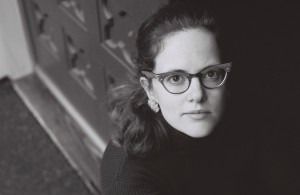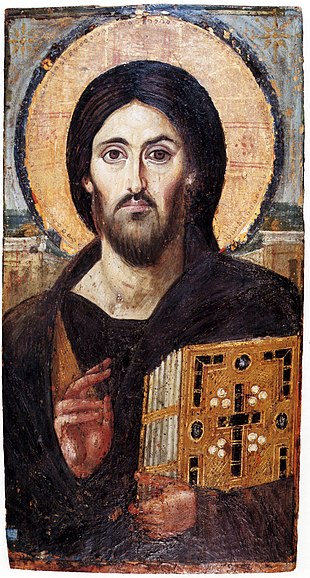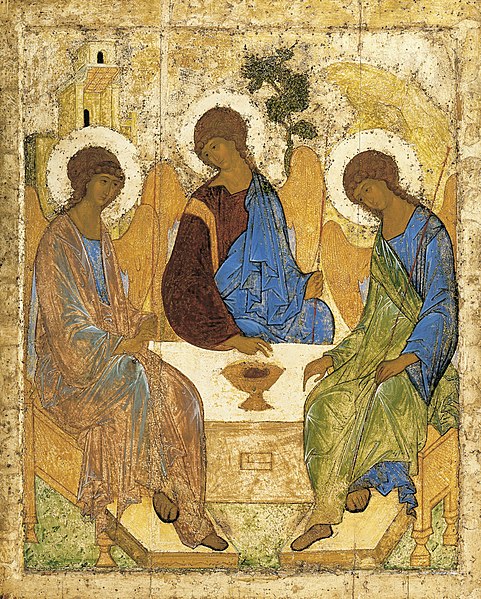Here is a press release from the Pennsylvania Shakespeare Festival:
Sweeney
Todd: The Demon Barber of Fleet Street Opens Friday; features two Broadway
stars in its leading roles at the Pennsylvania Shakespeare Festival
Center Valley, PA – The Pennsylvania Shakespeare Festival’s 21st season opens Friday with
Sweeney Todd: The Demon Barber of Fleet Street, and features
William Michals and Dee Roscioli, two prominent Broadway actors, as Sweeney Todd and Mrs. Lovett respectively.
William Michals starred in last year's PSF season as Emile DeBecque, fresh off the Tony Award winning landmark Broadway revival of
South Pacific. Michals returns this summer to take the title role in Sweeney Todd, the
famed barber of Fleet Street. Michals' credits include both the Beast
and Gaston in the Broadway’s
Beauty and the Beast, and the national tours of Les Miserables (Javert),
The Scarlet Pimpernel (Chauvelin), and The Music Man (Harold Hill).
Dee Roscioli is an
Easton-area native known for her long run as Elphaba in
the hit musical
Wicked on Broadway, as
well as the Chicago, San Francisco, and national touring productions. She will play Mrs. Lovett, the meat pie-making accomplice of
Sweeney Todd who sparks their diabolical plan. Ms.Roscioli’s national
tour credits also include the principal role of Grizabella in
Cats.
Based on an adaptation by Christopher Bond,
Sweeney Todd tells the story of a barber who has returned to
London after 15 years in a penal colony. Working with his landlady, Mrs.
Lovett, Sweeney plots his revenge upon the Judge who falsely convicted
him and destroyed his family.
Sweeney Todd meshes a masterful plot of thrills and unexpected
turns together with a beautiful yet haunting score to create a musical
experience unlike any other.
Following last season’s stellar production of
South Pacific, Dennis Razze returns to direct a spectacular cast: in addition to
Michals and Roscioli, Broadway veteran Christopher Coucill returns to PSF as the antagonistic Judge Turpin.
Michelle Sexton, who has been featured in opera and theatre companies across the country, plays the mysterious Beggar Woman.
The cast also features Dave Schoonover as the devious Pirelli,
Paul Louis Lessard as Jonas Fogg, Evan Harrington as The Beadle, and
David Garry as the Bird Seller. Katie Wexler, aDeSales alumna plays Johanna, and
James Stapb plays the love-struck Anthony Hope.
Vincent Trovato
returns to PSF as the music director and conductor of Sondheim’s thrilling score.
Steve TenEyck has designed the grim, London setting for the show.
Eric T. Haugen is the lighting designer. Lisa Zinni, whose New York credits include
Hair and Rent has designed the costumes.
Martha Ruskai designed wigs and make-up. Erin Hurley choreographed. The sound design has come from
Matthew Given, PSF’s resident sound designer and production manager.
Robin Grady serves as production stage manager.
Sweeney Todd opens
June 15 on the Main Stage of the Labuda Center for the Performing
Arts on the DeSales University campus in Center Valley and continues
through
July 1.
The performance
times are at 7pm Tuesdays, 8pm Wednesdays through Saturdays, with
matinees on Saturdays and Sundays at 2pm (excluding Saturday, June 16th). One Sunday evening performance
is offered at 7:30pm on June 17.
Single ticket prices range from $25 to $55. Single tickets, subscriptions and packages that include tickets to
Sweeney Todd are available at www.pashakespeare.org and by contacting the Box Office at 610.282.WILL [9455].
The 2012 season also includes three plays by Shakespeare,
Much Ado About Nothing (July 11-August 5), The Tempest (June 20-July 15), and
King John (July 25-August 5). Also in the line-up is Tennessee Williams’
Cat on a Hot Tin Roof (July 19-August 5), and two children’s plays,
Shakespeare for Kids (July 25-August 4) and Snow White and the Seven Dwarfs
(thru August 4).
The Production Sponsor of
Sweeney Todd is Alvin H. Butz, Inc. The Season Sponsor is The
Rider-Pool Foundation. The Associate Season Sponsors are Linda Lapos and
Paul Wirth, Lutron Electronics Company, Inc., and the Harry C. Trexler
Trust. Season Media sponsors are The
Morning Call and Service Electric Cable TV & Communications.
The Pennsylvania
Shakespeare Festival at DeSales University is the Official Shakespeare
Festival of the Commonwealth and a professional, not-for-profit, theatre
company. An independent 501 c 3
organization, PSF receives support from DeSales University and relies
on contributions from individuals, government agencies, corporations and
foundations. PSF is a constituent of the Theatre Communications Group
(TCG), the national organization for the American
theatre, and a member of the Greater Philadelphia Cultural Alliance,
Lehigh Valley Arts Council and the Shakespeare Theatre Association.
PRINCIPAL ARTISTS’ BIOGRAPHIES
WILLIAM MICHALS, Sweeney Todd, appeared in the leading role Emile DeBecque in the recent landmark revival of Rodgers and Hammerstein’s
South Pacific at Lincoln Center. The Broadway and concert star made his Broadway debut as The Beast in Disney’s
Beauty and the Beast, and later returned to play Gaston in the same production. His career includes leading roles asJavert in
Les Misérables, Billy Flynn in Chicago, Don Quixote in
Man of La Mancha, Harold Hill in The Music Man, and the title role in
The Phantom of the Opera. A recipient of the prestigious Anselmo
Award, he also earned recognition by Chicago’s Jefferson Award for his
portrayal of Chauvelin in the national tour of
The Scarlet Pimpernel. Audiences across the country have enjoyed him as Captain von Trapp in
The Sound of Music, and as Billy Flynn in Kander & Ebb’s
Chicago.
DEE ROSCIOLI, Mrs. Lovett, recently completed her run as Elphaba in the National Tour of
Wicked. Prior to the tour, she appeared in Wicked on
Broadway, after closing the record-breaking Chicago production and
performing the role in cities across the US. Ms. Roscioli holds the
distinction of having played Elphaba
in more performances than any other actress. Additional NY credits
include
The 24-Hour Musicals, Murder Ballad (Workshop, Manhattan Theatre Club),
Dedalus Lounge (Interart Theater Annex), Therapy Rocks (NYMF). National tour:
Cats (Grizabella). She recently workshopped Bobby Cronin's
Welcome to My Life, and Liberty.
CHRISTOPHER COUCILL, Judge Turpin. PSF:
Man of La Mancha, King Lear, 1776,
Hamlet. Broadway: The Graduate,
Kiss Me Kate, Annie Get Your Gun. Philadelphia:
Body Awareness (The Wilma), Crazy for You
(The Forrest), Annie Get Your Gun (The Prince), Silverhill (InterAct). Regional:
McCarter, Arena Stage, Hartford Stage, Shakespeare & Company,
The Huntington, Boston Shakespeare Company, Dallas Theatre Center, and
many others. Television:
Deadline, Law & Order, One Life to Live,
O Pioneers!, Margaret Mead: An Observer Observed.
DAVID GARRY, Birdseller. Broadway/Tour:
Company, Sweeney Todd. Off-Broadway: Roadshow, Beowulf, Mirete, Miss Liberty.
Regional: Merrily We Roll Along,Cincinnati Play House,
Camelot and My Fair Lady, John W. Engeman Theatre; South Pacific,
The Pennsylvania Shakespeare Festival; Ragtime, The Kennedy Center for the Performing Arts;
Joseph and the Amazing Technicolor Dream Coat, Arkansas Repertory Theater;
Carnival!, Paper Mill Playhouse
MATTHEW GIVEN,
Resident Sound Designer, Production Manager, PSF. Fifth season as
production manager and ninth season as resident sound designer at PSF.
PSF designs include:
A Winter’s Tale, King Lear, Dracula, Romeo and Juliet (’10), and
The Mystery of Irma Vep. Other regional: The Orlando Shakespeare
Theater, The Centenary Stage Company, and Arcadia University. M.F.A. in
sound design from Ohio University.
EVAN HARRINGTON, Beadle Bamford. Broadway:
Avenue Q (Brian) and The Phantom of the Opera
(Ubaldo Piangi). National tours: The Music Man,
Phantom and Camelot. Others: 30 Rock (Roy), Mary Zimmerman's Candide (Grand Inquisitor/Orator),
Into the Woods (Baker).
PAUL LOUIS LESSARD, Jonas Fogg. NY: NYMF’s
Open The Dark Door as Peter – Outstanding Individual Performance Award. Regional: Mary Sunshine in
Chicago (Northern Stage); Chantal in La Cage Aux Folles (The Maltz Jupiter Theatre); Cliff in
Sunset Boulevard (Portland Center Stage); the Young Fool in Big River
(Music Theatre of Wichita). Many NY Concerts including Lincoln Center
and Birdland. University of Michigan. London Dramatic Academy.
PATRICK MULCAHY,
PSF Producing Artistic Director. Since assuming leadership in 2003, Mr.
Mulcahy has led PSF’s return to artistic excellence and financial
stability, rebuilt
the professional company of artists, and achieved increasing national
recognition for the Festival. Further accomplishments include PSF’s
first-ever award from the National Endowment for the Arts, and
attracting a company of artists including winners and nominees
of the Tony, Obie, Emmy, Outer Critics Circle, Drama Desk, Jefferson,
and Barrymore awards to the Festival, growth in all income areas, a 50%
increase in annual attendance, and the expansion of the number of
Actors’ Equity contracts per season.
As a professional director, actor and fight director, credits include
Broadway, Off-Broadway, regional theatre, television, and radio. Mr.
Mulcahy has acted with Angela Basset, Peter MacNicol, Hal Holbrook, Joan
Cusack, Don Cheadle,Anne Meara, Milo O’Shea,
Cynthia Nixon, Tony Shaloub, Bradley Whitford, and others at the New
York Shakespeare Festival, Hartford Stage, Roundabout Theatre Company,
Great Lakes Theatre Festival, Syracuse Stage, and the Walnut Street
Theatre. He served as a fight director for Tom Hulse
and Timothy Busfield in A Few Good Men on Broadway and for
Off-Broadway productions starring John Savage, John Mahoney, Marcia Gay
Harden, and Patrick Dempsey. He directed Oscar nominee Vera Farmiga in
The Real Thing, and, for PSF, directed Hamlet (2011),
Antony and Cleopatra (2009), The Winter’s Tale (2007),
Henry IV, Part I (2005), The Tempest (1999), and acted in and served as fight director for
The Taming of the Shrew (1998) and Julius Caesar (1997). As Head of Acting at DeSales, Patrick directed ten productions for Act 1, including
I Hate Hamlet, The Grapes of Wrath, The Foreigner, and
The Diary of Anne Frank. He holds an M.F.A. from Syracuse University.
DENNIS RAZZE,
Director; Associate Artistic Director, PSF. Chairman of the theatre
department of DeSales University and a founding member of PSF.
Lastsummer, he directed PSF’s
production of South Pacific and more recently, Act 1’s sold out hit musical
Anything Goes. He has directed many of PSF’s acclaimed productions including
A Funny Thing…Forum, 1776, Cyrano de Bergerac,
My Fair Lady, Amadeus, Man of La Mancha,
The Taming of the Shrew, Twelfth Night,
A Midsummer Night’s Dream, and As You Like It. Razze also composed musical scores for PSF’s
Cyrano, The Tempest, The Merry Wives of Windsor,
Twelfth Night, Romeo and Juliet, and
A Midsummer Night’s Dream. He was awarded Certificates of Merit from the American College Theatre Festival for his direction of
Fiddler on the Roof, Oklahoma! and The Music Man and he was the guest director for Lehigh University’s production of
The Music Man at Zoellner Arts Center in 2003.
DAVE SCHOONOVER, Pirelli. Tours:
Young Frankenstein (Dr. Frankenstein u/s), Cats (Tugger). Regional:
Annie (Rooster), Pirates! (Huntington, upcoming at MUNY). BFA UWSP.
MICHELE SEXTON,
Beggar Woman, has performed extensively with opera companies, theaters
and music festivals throughout the U.S. and Europe. Nationally- Opera:
Des Moines Metro
Opera, New Jersey Opera Theater, Bohème Opera, Natchez Music Festival,
Springfield Regional Opera, Shaker Mountain Festival. Leading soprano in
La Traviata, La Bohème, Carmen, Don Giovanni (Anna),
Marriage of Figaro (Countess), Falstaff, Romeo et Juliette, Die Fledermaus. Theatre: Fiona-Brigadoon; Laurey-OKLAHOMA!, Hope-Anything Goes, Isabel-Scrooge, Nimue-Camelot.
Manhattan School of Music-BM, MM.
JAMES STABP, Anthony Hope. PSF: Sailor (South Pacific), Bernardo/Lucianus (Hamlet) DeSales: – Lancelot (Camelot), Reuben (Joseph...)
and Sailor (Anything Goes).
STEVEN TENEYCK,
Set Designer. Design work in theatre, dance, opera, performance art and
live event has been seen both nationally and internationally. Companies
include Tacoma
Opera, Syracuse Opera, Florida Grand Opera, Minnesota Opera,Tri-Cities
Opera, Syracuse Stage, TACT NYC, Big Art Group NYC, Pacific Performance
Project, The Kitchen Theatre Company, The Hangar Theatre,
Merry-go-Round, Ensemble Theatre, and The Herson Group
Ltd. Beyond his freelance work, Steve teaches lighting design at Ithaca
College and received his M.F.A. from the University of Washington in
Seattle.
VINCENT TROVATO, Musical Director/Conductor. PSF:
1776. He has musically directed many national and area
productions. In 2010 he contributed arrangements and orchestrations for
the Muhlenberg College premiere of
An American Tragedy, a new Charles Strouse musical. He also provided arrangements and accompaniment for Sandy Duncan's one-woman show
Free Fall at the Berkshire Theatre Festival. Vincent recently
made his debutwith the Pennsylvania Sinfonia Orchestra, offering a
program of Broadway and Operetta repertoire.
KATIE WEXLER, Johanna. PSF: Mary (Pride and Prejudice), Martha Jefferson (1776). Act 1 credits include
Dot (Sunday in the Park), Reno Sweeney (Anything Goes), and Guinevere (Camelot).
LISA ZINNI,
Costume Designer. PSF: Antony and Cleopatra,
Amadeus, The Man of La Mancha, My Fair Lady,
The Imaginary Invalid, The Mystery of Irma Vep, Charley’s Aunt, and
A Midsummer Nights Dream Associate Costume Designer for the Broadway, National Tours and international Companies of both
RENT and HAIR. Design credits include productions Off
Broadway, NY Musical Theatre Festival, NY Fringe Festival, Kef
Theatrical Productions, Ars Nova, The Arden Theatre Company, Orlando
Shakespeare Theatre, Syracuse Stage, The
Cape Playhouse, Riverside Theatre in Vero Beach, and Bristol Riverside
Theatre. MFA Penn State, BA DeSales.


